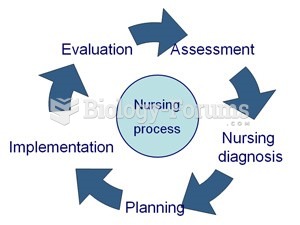|
|
|
Did you know?
Asthma attacks and symptoms usually get started by specific triggers (such as viruses, allergies, gases, and air particles). You should talk to your doctor about these triggers and find ways to avoid or get rid of them.
Did you know?
Malaria was not eliminated in the United States until 1951. The term eliminated means that no new cases arise in a country for 3 years.
Did you know?
Vaccines prevent between 2.5 and 4 million deaths every year.
Did you know?
The human body produces and destroys 15 million blood cells every second.
Did you know?
More than 34,000 trademarked medication names and more than 10,000 generic medication names are in use in the United States.







